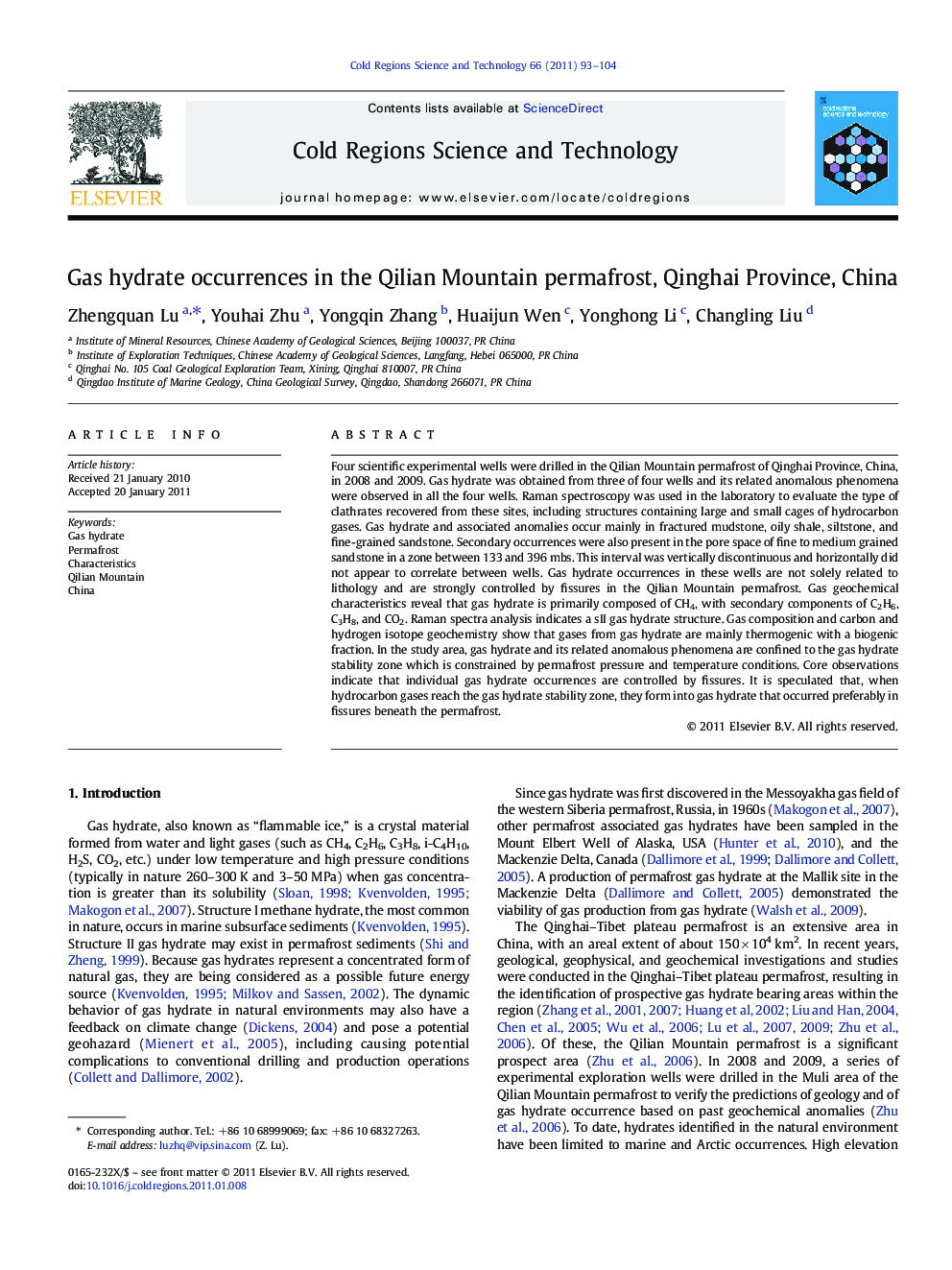| Article ID | Journal | Published Year | Pages | File Type |
|---|---|---|---|---|
| 4676152 | Cold Regions Science and Technology | 2011 | 12 Pages |
Four scientific experimental wells were drilled in the Qilian Mountain permafrost of Qinghai Province, China, in 2008 and 2009. Gas hydrate was obtained from three of four wells and its related anomalous phenomena were observed in all the four wells. Raman spectroscopy was used in the laboratory to evaluate the type of clathrates recovered from these sites, including structures containing large and small cages of hydrocarbon gases. Gas hydrate and associated anomalies occur mainly in fractured mudstone, oily shale, siltstone, and fine-grained sandstone. Secondary occurrences were also present in the pore space of fine to medium grained sandstone in a zone between 133 and 396 mbs. This interval was vertically discontinuous and horizontally did not appear to correlate between wells. Gas hydrate occurrences in these wells are not solely related to lithology and are strongly controlled by fissures in the Qilian Mountain permafrost. Gas geochemical characteristics reveal that gas hydrate is primarily composed of CH4, with secondary components of C2H6, C3H8, and CO2. Raman spectra analysis indicates a sII gas hydrate structure. Gas composition and carbon and hydrogen isotope geochemistry show that gases from gas hydrate are mainly thermogenic with a biogenic fraction. In the study area, gas hydrate and its related anomalous phenomena are confined to the gas hydrate stability zone which is constrained by permafrost pressure and temperature conditions. Core observations indicate that individual gas hydrate occurrences are controlled by fissures. It is speculated that, when hydrocarbon gases reach the gas hydrate stability zone, they form into gas hydrate that occurred preferably in fissures beneath the permafrost.
Research Highlights► It was the first to discover gas hydrate in the Qilian Mountain permafrost of continental China in 2008 and 2009. ► Gas hydrate and associated anomalies occur mainly in fractured mudstone, oily shale, siltstone, and fine-grained sandstone in a zone between 133 and 396 mbs. ► Gas hydrate is primarily composed of CH4, with secondary components of C2H6, C3H8 and CO2, indicating a sII structure. ► Gas from gas hydrate are mainly thermogenic with a biogenic fraction.
